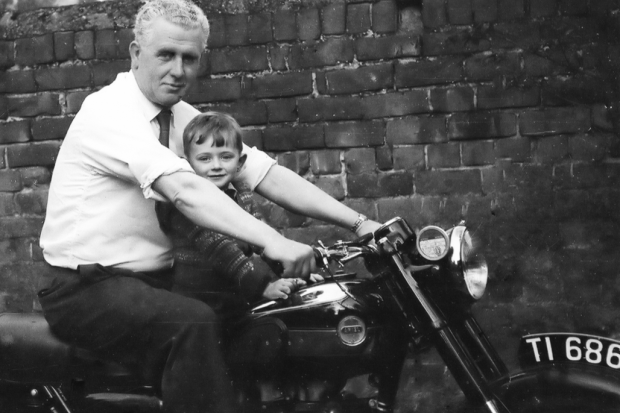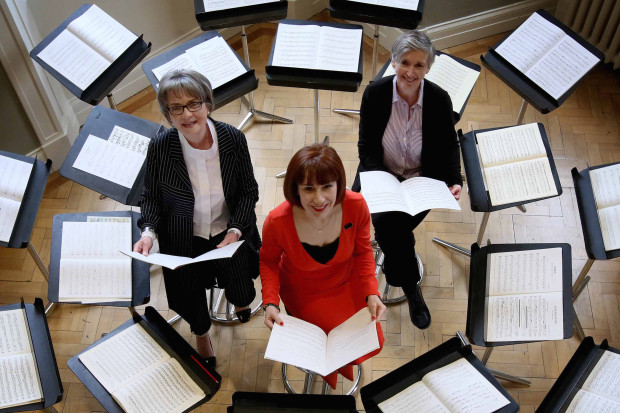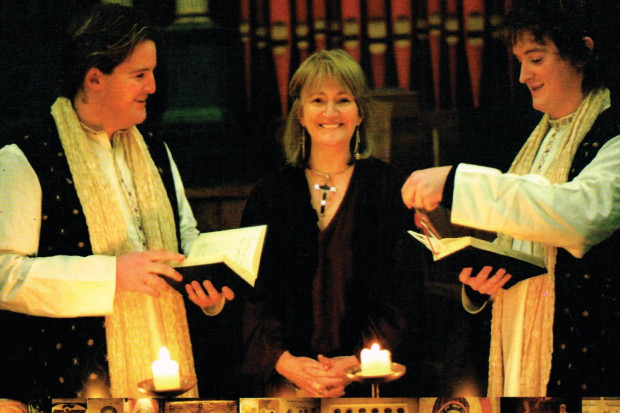
Tiger Ireland, Turd Sniffers & Meta-Trad: People, Power and the Pursuit of Privileged Status in Music in Ireland
‘…What constitutes the charm of our country, apart of course from its scant population, and this without help of the meanest contraceptive, is that all is derelict, with the sole exception of history’s faeces. These are ardently sought after, stuffed and carried in procession. Wherever nauseated time has dropped a nice fat turd you will find our patriots, sniffing it up on all fours, their faces on fire. Elysium of the roofless… Lie down, all seems to say, lie down and stay down.’
Quotation used by Harry White, Professor of Music at University College Dublin, in support of his thesis that Traditional Irish music (a.k.a. ‘the ethnic repertoire’) is lacking in scholarly analysis. The quotation is taken from David Lloyd’s theoretical work Anomalous States (p. 26), and he in turn borrowed it from Samuel Beckett’s Lost Love (p. 73), a novella from 1946 (Penguin Books, 1973). Prof. Harry White and Dr Barra Boydell are the joint editors of UCD Press’ upcoming Encyclopaedia of Music in Ireland. Dr Adrian Scahill is subject editor for Traditional music.
A special two-day conference was held at NUI Maynooth over December 1st and 2nd last to gather information relating to ‘Music and Identity in Ireland’ for the editors of the forthcoming Encyclopaedia of Music in Ireland, Harry White and Barra Boydell. This article draws on elements of those two days’ discussion, and was prompted by the increasingly-contested territoriality which affects all kinds of music today, in particular the status accorded music as fundamental to Irish identity.
Even though forty years ago music therein had little visibility, today (collectively, in all its genres) it now leaves literature somewhat in the commercial shade and is better known and a bigger earner for Irishness than even Guinness. Forty years ago too it was enough to say ‘Irish’ music when one meant ‘Traditional’; now there is a great need to be precise, for the term can now additionally indicate the best known and highly successful ‘Popular’, as well as ‘Rock’, ‘Contemporary’ and ‘Classical’. Martin Dowling’s paper at the Maynooth event broke into further implications of this new ground, analysing just how the ‘Celtic revival’ had been initiated as literary, and not about music. It must be added to his observations that music as the more visible element of Irish identity in the world today is no whimsical change of fashion. It is there as a direct consequence of its media of transmission within Celtic Tiger Ireland in a globalised culture – technological and sociological synergies which were not present, and could not have been dreamt of in the literary period. The words which follow here are not a review of any of this (for Dowling is publishing his refreshing interpretation elsewhere this year), but, drawing on notes from the Maynooth gathering, are a set of observations on the nature of Traditional music today.
‘Ethnic’ begs ‘Imperial’
Colin Hamilton wrote a few years back that he could see little of the sense of the ‘great popularity’ which was being attributed to Traditional music. He saw it as played only by specialised coteries of people, in very specific venues, as having a past-the-peak big-stage life, insignificant album sales and a low level of professional employment. While his observations are, in terms of Popular culture, viable, there is nevertheless a very real contrary picture. This has been inversely highlighted by the aforementioned Harry White, most vividly in his provocative work The Keeper’s Recital, and latterly at the Maynooth seminar. ‘Traditional’ music doesn’t leap out as his favourite listening for sure, but his concerns nevertheless do involve the de facto, hidden (or ‘hiding’ as Dowling says) practice of Traditional music. This music White refers to somewhat disingenuously as ‘the ethnic repertory’ – the better, presumably, to distinguish it from Classical or ‘Art’ music, which, deductively, by way of standardising the argumentative ground, will be addressed here as ‘the imperial repertory’. In a nutshell, The Keeper sees Irish nationalism as having dominated the popular ear here – implicitly that is, as Luther might have said (after), that it had ‘all the good tunes’. Consequently it absorbed talent which might – or ‘should’ – otherwise have gone into composition and performance in the imperial repertory. At the Maynooth seminar, which was about identity, his concern was about ‘protectiveness’ and its perceived consequences – the ethnic’s being accorded exclusive status as national icon.
Trad a resumed ‘Classical’ music?
‘National’ icons are accorded their status by assumption and/or ascription. Should the ethnic repertory be regarded as emblem for Ireland over and above the imperial? If we are talking about Ireland as a onetime unit of the British Empire we are poorly represented in any extant textbook definitions. But if we view Ireland as a region with distinctive language, idiom, cultural values, political traditions – as well as distinctive music, song and dance – then another set of values takes over. Had indeed Ireland been a major mainland European power, the ethnic repertory might have logically kept developing its sophisticated perimeter in tandem with intellectual artistry into a distinctive ‘classical’ or ‘art’ form. But the country did not have that status. In fact Ireland was considered so culturally wanting that the neighbouring island (to use Brian Friel’s term from Translations) sought to impose its own cultural values upon it. This is a dated argument, long ago decided upon by everyone, but there are relevant strands in its fallout.
One is that if the art music of the Gaelic aristocracy went underground four centuries ago with the flight of its patrons to France and Italy, or was absorbed by the then ‘folk’ music, then so too for its melodic principles, ethos and artistic content. Since the aural process in speech is a good preservative for accent, it must be assumed that in music it preserves local and other styles. Therefore it should be expected that under changed, more favourable economic circumstances, social awareness, scholarship, political incentive and viable performance opportunities indigenous melody and artistry would re-emerge and/or prosper.
The declaration of independence of 1948 no doubt was a stimulant to (and consequence of?) regeneration of such conditions in post-Civil-War Ireland. Close after, the 1951 formalisation of the ethnic repertory represented by the setting up of Comhaltas Ceoltóirí Éireann (CCÉ) simultaneously indicated an active constituency as well as being a tremendous incentive to performers. In the same year the formalisation of State support for Art by the establishment of the Arts Council raised public awareness of both the material cost and cultural value of art itself. Each of these events facilitated the cared-for emergence of the ethnic repertory’s present systems of promotion, performance and education.
Collectively those circumstances and conditions suggest that the once-dismissible ethnic repertory is, following the logic of Philip Bohlman, ‘classicised’, by now, arguably, an indigenous ‘classical’ music. Traditional music of course didn’t ever die, but with the eclipse of the ethnic repertory as the standard music for social dancing by Popular showband music, its widespread practice had dipped sharply in the 1950s. Yet as a result of the listening, assessment, appreciation competition base of CCÉ, and the theatrical, ‘club’ re-presentation and radio performance pioneered by Ó Riada in the new technologically-democratic era of cassette tape, the ethnic repertory revived. Inside a decade it moved from being emphatically a doing music, to being primarily a sit-down, listening music – rather like the imperial repertory had already done centuries before.
The imperial’s lost souls
The startling thing – perhaps due to our enthusiastic absorption in the EC – which was itself partly driven by our desire to de-connect from the UK – is that the ethnic repertory did take off. This was a subtle process, but the State was involved to a degree, with major stylists being promoted abroad as ambassadors of Irish culture. And though the Arts Council itself initially excluded ‘traditional music’ from consideration, it eventually relented and by 1990 was giving close to a third of its music budget to the ethnic repertory. In its formal classes CCÉ has taught a huge number of people to play, Na Píobairí Uilleann turned around the fortunes of uilleann piping by dedicated promotion and teaching new performers, and the harp organisations feed into the same talent pool. Various large-scale regional initiatives like Armagh Pipers’ Club or the Magh Éanna fiddle school in Donegal have taught large numbers (the former alone some 5,000 since 1966), and there are also many, many individual, unaffiliated music teachers in addition to the summer schools which began in 1973. Incrementally, all of these agencies indicate an active playing pool of (let’s say) some 60,000 players of all ages (more likely as great as 150,000, but the actual number is not important for this argument). Top of their pyramid of talent are a number of exceptionally able, imaginative and occasionally virtuosic abilities and intellects. Apropos The Keeper, that same 60,000 with all its gradations are for the most part the same 60,000 who would be playing the imperial repertory, but aren’t. Hence a net loss to it. The pertinent question is: do these people diminish Irish music-artistry, and, therefore, does their playing Traditional music represent an artistic and cultural loss to Irish art? Consequently, is their being accorded a status representative of Irish music invalid?
Taxonomists and turd-sniffers
This introduces that which is going on in Traditional music at the present time. The Keeper argument accords no artistic significance to the performers of the ethnic repertory. At Maynooth, as an editor of the Encyclopaedia of Music in Ireland, Harry White took this further, speaking on the one hand of ‘the complex organisms of Art music’, but dismissing what he here called ‘Traditional’ music’ as but ‘cultural fetishism’. He went on to implant the suggestion that the collection of music and song is over-rated – ‘tribalism’ and ‘taxonomy’. By startling implication he portrayed the ethnic repertory and its aesthetics as part of ‘history’s faeces’ (in the quotation printed on page 9), performance of it as non-intellectual; he rubbished the idea of aurally-transmitted style (the ‘nya’) by disingenuous rhythmic and tonal mis-pronunciation as ‘the knee-a’. Prejudice aside, there is of course (however insulting or painful) partial validity in each of these points. But as criticism of the nineteenth-century political antiquarian impulse and subsequent nationalist pragmatism, they collectively apply not only to the ethnic repertory, but across the board in all areas of Irish culture. The ethnic repertory of course should give the ‘faeces’ reference the serious consideration which their original utterer, Samuel Beckett, intended (White borrowed his slanderous analogy from literary critic David Lloyd’s analysis which had quoted it from (the censored and banned) Beckett’s momentary slash at the claustrophobia of de Valera’s Ireland in a 1947 novella Lost Love). But the Beckett words’ meaning is not exclusive even to parochial, nationalist Ireland. They can be applied to all aspects of culture or cultural identity in any region of Europe or its former-colonial extensions (in particular to Britain, and of course to Germany). And such a dismissive attitude to the nuts and bolts of the marshalling of cultural capital is also applicable to the imperial repertory itself – it simply depends on one’s class perspective and sense of ‘aesthetic’. So while analysis such as this demands being done for the ethnic repertoire, it is essential that it be done by those inside the field, who actually understand relevant nuance (in particular, concepts and their pronunciation), and, most importantly, passionately love the material they work with.
What the vehemence of the quotation as used in the context of the ethnic repertory suggests however is a beleaguered imperial repertory, which no longer has exclusivity in the colleges, and which has been devalued internationally by Popular and other genres, including the Irish ethnic. One is obliged however to consider the only truly important factor – the artistic dimension. Is traditional music itself (apropos the ‘faeces’ implication) in fact ‘crap’? Are its major stylists crap too?
In common with the imperial repertory, the ethnic (as with all musics worldwide) has of course its poor players and idealistic zealots. Both genres have a gradation from beginners, through a large pool of indifferent (but personally satisfied) players, good performers, and, at the top end, the brilliant, the charismatic, the radical, the courageous and simply virtuosic artists. But as Colin Hamilton indicated, and Dowling (quoting fiddler Paul O’Shaughnessy) explained, these are largely hidden from sight in the ethnic repertory – ‘hiding’. They are hidden or hiding for several reasons. One is that not everyone who plays has the need or want to be seen and heard – artistic satisfaction for most people comes primarily from the personal engagement with playing. Another reason is that the small and the local often, reasonably, wish to remain just that – a group of friends, neighbours or associates who play relaxedly as one might converse, disdaining undue attention, input from tourists (especially music tourists and media) and commercial promotion. Considering the professional or commercial dimension itself, the ethnic repertory is a specialist genre which like all such can only have relatively few major outlets. Finally, most professional traditional music is performed abroad, and the bulk of its (not inconsiderable) album sales are there too (for instance, at one concert alone in The Hollywood Bowl in LA Altan played to 17,000 people and sold some 700 CDs). While the numbers game of this ‘Hiding Ireland’ is clearly visible to The Keeper (by the absence of significant numbers in the imperial music ranks), its artistic dimension may well be invisible. It is blurred in this case by a combination of the author having no particular liking for the idiom (understandable, and perfectly reasonable), and, in particular, by his non participation in its events or products. If one is not part of a scene, or is not in the way of listening, then one does not know what is going on.
MetaTrad
What is actually going on inside Traditional music at the present can no longer be understood in cliché, is quite unpredictable, and for some may be disturbing. There are quite a number of ‘straight’ traditional music virtuosos who repeatedly bring new expressive dimension to established repertoire each time they perform it, in the case of Martin Hayes for instance by charisma and by reworking tempo, dynamics and established patterns; older, solid stylists thrill with reputation, directness, nuance and emotional depth. There is however another ‘new-era’ side about which Traditional musicians and aficionados are very divided. This creates an age-group- and era-related schism. Some indeed do think that a lot of the new-era Trad is ‘crap’, but this is an insider version of ‘crap’, an informed view from those who well understand and favour the genre, unrelated to the superficiality of the non-aficionado or the impatience of one who just plain doesn’t like the stuff. An attempt will be made to evaluate the new Trad as follows. Our present virtuosic players typically begin to play at around age eight. By sixteen they have learnt a huge repertoire, and, bursting with energy and confidence, strain at the limits of brilliance and variation, having developed their talents to the highest technical level within the genre, particularly on the hallmark, skills-display pieces which are, typically, reels. Some players diversify into other Traditional music forms – such as European or American – in order to engage their hungry abilities while remaining within the Folk music idiom or aesthetic. Additionally, the top end of players (‘the musicians’ musicians’ so to speak) digress into composition, typically within genre. While their work is often too far ahead for the average ethnic-repertory listener to immediately appreciate (but this, typically, changes after a couple of years), there is a very poor chance of it being understood by those on the outskirts of the field for whom acquaintance with the genre is based only in the substantial, time-tested stalwart airs.
For instance, tune composition at this level of performance ability was dismissed a century ago by the Irish-music-enthusiastic, classical-based musician and arranger Annie Patterson who considered it to have formulaic, ultimately-worthless, potential; she could only see it as endless, mechanical re-combinations of note-patterns within rhythmic templates. Her sense of aesthetic did not appear take into account the intrinsic subtlety of the music as something which had evolved far from the ‘standard’ inherited repertoire with which she was both very familiar and very fond. She did not appear to consider that composition should be linear – moving on from – a process of accretion dependent upon pre-figured, aural knowledge, in-built or conditioned rhythmic, melodic, and instrument-generated assumptions which are allied to the circumstantial, artistic and aesthetic information and considerations that compel people to play and listen. Rather she appears to have viewed composition as ideally vertical, prescriptively pre-planned and three-dimensional, as coming out of the pre-existing, definitive core material.
Today’s top-end performers tend to go way outside individual variation and other personal stamps, and perhaps may enter the domain of what Mícheál Ó Súilleabháin calls ‘Trad-Pop’. Going beyond that, there is the possibility of crossover and fusion, into Jazz as with Cormac Breathnach, or Classical with Ó Súilleabháin and Antonio Breschi, Techno with Afro Celts, Swing with Sharon Shannon, Rock with Dónal Lunny, and perhaps Punk with Kip’s Bay and others. But for those who eschew those specific directions, there is a specific new domain of tunes – witnessed in such as Flook, Lúnasa, Buille, Solas – which by their nature and/or arrangement are performable credibly (so far) only by exceptional players. These involve the accentuated core ingredients of what is Traditional music – high-intensity rhythm, virtuosic fingerwork, catchy motif, select repetition, fast tempo and the key ingredient of emotional log-in to listeners in concert or dedicated festival settings. All this constitutes a distillation, concentration or isolation of the actual ‘knee-ah’ – loosed from familiar and consciousness-limiting melody titles, types and even rhythms, a tremendous, breathtaking high which involuntarily draws forth empathetic movement. It is achieved incrementally when carefully presented, and though still – vitally, and independently – acoustic, it may use expert technical mediation to considerable advantage. Such music is, effectively, the meta form of Traditional music – an essence, that which is ‘about’ the essential sound – MetaTrad. Some such music pushes towards complex, multi-layer composition, breaching established artistic boundaries; other examples float free of implication. But all are hugely, addictively satisfying to cultish aficionados for their liberating empowerment, transport to the other plane of consciousness.
What is music for? Why does it work? Entertainment for listeners, fulfilment for players, satisfaction for artists, stimulation of the intellect and spontaneous release of feeling? Professionalism and making a living? Representing culture, art, nationality? Pushing out artistic boundaries? Who could even consider inferring that, for instance, Seamus Ennis, Treasa Ní Cheannabháin, Paddy Fahy, John Joe Kelly, Liz Carroll or Kevin Crawford are ‘crap’. Certainly not a musician.
The stated purpose of the Maynooth event was to explore ideas on music and identity for the editors of the Encyclopaedia of Music in Ireland, Barra Boydell and Harry White. But neither the presentations nor the stimulated commentary was recorded, and White attended only on the day of his own paper. At a more recent seminar, the February 4th Flight of the Earls music exploration at DIT in Dublin, none of the (otherwise excellent) presentations concerning the type of music which O’Donnell and O’Neill were likely to have heard en route in 1607 speculated on any vernacular genre – neither Irish, French nor Italian. The implication is that none of it would have been of any interest to leaders. Assumptions and conventions concerning prestige, class, genre and style continue to dominate musicological thinking in the off-the-ball contest for access to people, power and income. Is it realistic to expect objective editorial commentary on ‘the ethnic repertory’ in the forthcoming important text with such active prejudice lingering?
Published on 1 March 2007
Fintan Vallely lectures in traditional music at Dundalk Institute of Technology. He is author of several biographical and ethnographic books on the music, and is editor of the A-Z reference work Companion to Irish Traditional Music.















